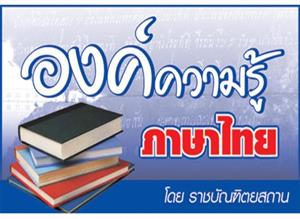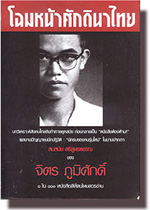Researcher Mrs. Wilailak Lanwong
Organize
Watklang municipal School, Department of Education, Khon Kaen
Municipal, Department of Local Administration
Year of Study 2023
Abstract
Developing a learning model based on the TLLM concept combined with
collaborative learning to enhance English reading skills for Grade 9 students. This
research aims (1) to study the basic information for conducting and developing a
learning model that combines TLLM concept and collaborative learning to enhance
English reading skills for Grade 9 students, (2) to create and develop a learning
model that combines TLLM concept and collaborative learning to enhance English
reading skills for Grade 9 students, (3) to study the results of an initially
implementation using a learning model that combines TLLM concept and
collaborative learning to enhance English reading skills for Grade 9 students, (4) to
evaluate the results of an implementation of the learning model that combines
TLLM concept and collaborative learning to enhance English reading skills for Grade
9 students, and 5) to study the satisfaction using the learning model that combines
TLLM concept and collaborative learning to enhance English reading skills for Grade
9 students. The sample in this study consisted of 33 students in Mathayom Suksa 3/1
who studied in academic year 2023 at Watklang Municipal School, Muang District,
Khon Kaen Province, which were obtained by a group of cluster random sampling. All
data collecting were collected through the development tools such as; interview
form, synthetic form and learning assessment form. The lesson plan in this study
were designed based on a learning model that combines TLLM concept and
collaborative learning to enhance English reading skills for Grade 9 students. The
English Reading Skills Test and the Learning Style Satisfaction Test in this study, are
use four steps of Research and Development methodology; Step 1: Research and
จ
analysis (R1) is a study of fundamental data for creating and developing a learning
model by synthesizing data from interviews with English teachers and experts. Step 2:
Development (Development: D1) is the creation and development of a learning
model based on the coherence of the research tools used by experts. Step 3:
Conducting research (Research and Implementation: R2) is an initially implementation
the learning model to evaluate learning model by expert persons and practice them
in real-life situations. Find the effectiveness of index of criteria at 75/75 and find the
effectiveness index of the learning model. Last step is step 4: Development and
evaluation (D2), which evaluates the use of the learning model by comparing the
average student achievement scores between before and after implementation.
Comparing the scores of students English reading skills when finished the
implementation with the learning model with the 70% criteria and during students
learning the satisfaction through the learning model which was synthesized by the
researcher. The statistics used to interpret and analyze all data are: Effectiveness
Efficiency Index, Percentage, Mean, Standard Deviation and the statistical test. The
results of this research reveal that:
1. From the study of basic information, theories, principles and related
concepts, therefore, it synthesizes and develops as a learning model that
combines TLLM concept and collaborative learning to enhance English
reading skills for Grade 9 students. There are consist of five components; the
first component refer to 1) principle component of learning model. The
second one refer to 2) objective component. The third one refer to 3)
content and content component and the fourth component refer to 4)
activity component and learning process which were called IP-CIAS model.
There are compose of six learning stages as follow; Stage 1: (I) Identifying
problems and research questions, Stage 2: (P) Planning and designing the
research, Stage 3: (C) Collaborative learning, Stage 4: (I) Implementing and
collecting data, Stage 5: (A) analyzing data, and Stage 6: (S) Summarizing and
sharing. Finally, the last component refer to 5) measurement and evaluation
components.
ฉ
2. The theoretical learning model was appropriated and had the corresponding
index of the elements of the lesson plan prefer the score between 0.80-1.00.
The efficiency value of the learning model when initially implemented with
the field group prefer as 92.32/75.33. These value means that the learning
model was suitable for intervention the learning activities to engage students
achieve in English reading skill.
3. The efficiency of the learning model was 93.75/80.00 and the index of
effectiveness of the learning model was 0.63. In addition, the learners had
significantly higher scores on learning achievement after the implementation
with learning model than before the implementation with learning model.
The statistical significance was at the .05 level and the students had scores
on the English reading skills when finished the implementation with learning
model was higher than the specified criteria accounted for 87.87%, including
the average satisfaction with the learning model was 4.57 in which was the
highest level.



 ค้นหาทุกอย่างในเว็บครูบ้านนอก :
ค้นหาทุกอย่างในเว็บครูบ้านนอก :































